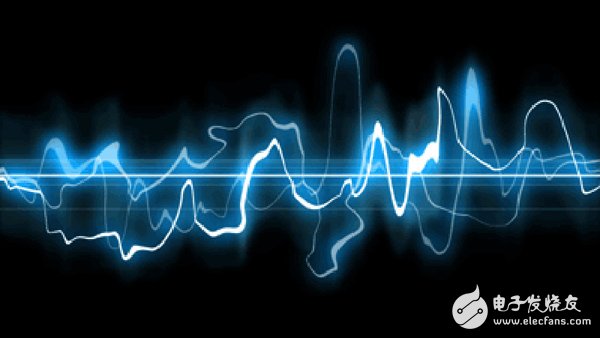
First, the solution of the conduction problem
1. Reduce EMI current by connecting a high impedance in series.
2. Short-circuit EMI current to ground or lead to other return conductors by connecting a low impedance in parallel.
3. Cut off the EMI current through the galvanic isolation device.
4. Suppress EMI current by its own action.
Second, electromagnetic compatibility capacitive solution
A common phenomenon is that one side of the filter capacitor is not considered to be directly connected to a separate impedance and is considered to be connected to the transmission line. Typically, the transmission line becomes "long" when the length of an input and output line reaches or exceeds 1/4 wavelength. Actually, this change can be approximated by the following formula:
L≥55/f
Where: l unit is m, f unit is MHz. This formula takes into account the average propagation speed, which is 0.75 times that of free space theory.
a. Dielectric materials and tolerances: Most of the capacitors used in EMI filtering are non-polar capacitors.
b. Differential mode (line to line) filter capacitive capacitor.
c. Common mode (line to ground / chassis) filter capacitor
Common mode (CM) decoupling typically uses small capacitors (10 to 100 nF). A small capacitor can short-circuit an undesired high frequency current to the chassis before it enters the sensitive circuit or when it is far from the noise circuit. In order to obtain a good high frequency attenuation circuit, reducing or eliminating parasitic inductance is the key. Therefore, it is necessary to use ultra-short wires, and it is particularly desirable to use leadless components.
Third, inductive, series loss electromagnetic compatibility solution
In terms of capacitance, if Zs and Z1 are not pure resistors, their actual values ​​are used when calculating the frequency. When the capacitor is connected in series with the power supply or signal circuit, it must satisfy:
1. The working current flowing through should not cause the inductor to overheat or over-exit.
2. The current flowing through does not cause magnetic saturation of the inductor, especially for highly magnetically permeable materials.
The solutions are as follows:
1 core material;
2 ferrite and ferrite loaded cable;
3 inductance, differential mode and common mode;
4 ground choke;
5 combined inductor and capacitor components.
Fourth, the solution to the radiation problem
In many cases, radiated electromagnetic interference problems may be generated and eliminated during the conduction phase, and some solutions may inhibit interference devices from operating on the radiation transmission path, just like field shielding. According to the shielding theory, the effect of this shielding depends mainly on the frequency of the electromagnetic interference source, the distance between the shielding device and the characteristics of the electromagnetic interference field - electric field, magnetic field or plane wave.
1. Conductor belt. Use copper or aluminum strips to quickly and easily establish a direct shield and low resistance connection or bus. They are convenient for temporary solutions and relatively permanent solutions. The thickness is between 0.035 and 0.1 mm with a conductive adhesive on the back for mounting. If a copper conductive strip is used, it passes through a resistance of about 20 mΩ/cm 2 . Application: Electrical shield; location of the leak point in the event of a fault; as an emergency solution, the plastic connector is turned into a metal, shielded flat cable, etc.
2. Mesh shielding tape and zippered jacket. Tin-coated stencil belt: mainly used for installation on an already assembled electric fee jacket as an easy-to-install bandage type shield. In order to reduce the magnetic field radiation or sensitivity of electricity bills, steel mesh belts are an effective solution.
Zippered Shielded Jacket: Use when there are clear indications that electricity bills are the primary cause of EMI coupling.
3. EMI seals. Application: EMI gaskets are the most commonly used method to solve radiation problems, sensitive problems, ESD, electromagnetic pulse and TEMPEST problems when the following conditions exist and require a true SE.
The chassis leak has been identified as the primary radiation path.
The mating surface is not smooth, flat or hard enough to provide a good connection.
4. EMI shielding of windows and ventilation panels: suitable for shielding the aperture.
The approximate model of a plane wave is:
SE≈104(-20-lgl)-20lgf
Where, SE unit is dB; l is the size of the mesh or mesh, the unit is mm; f is the MHz. Of course, as the frequency decreases, the upper limit of the shielding efficiency SE of the mesh is limited by the metal itself. In the near-field field, the shielding power of the H field is not affected by the frequency, and can be approximated by the following formula:
SEH≈10lg(πr/l)
Where r is the distance from the source to the shield, and l is the mesh size, both of which are in mm.
5. Conductive coating: used to establish EMI shielding cover in the plastic casing of the system, to transmit the shielding effectiveness SE of the existing common or deteriorated conductive surface, to prevent ESD or static accumulation, and to increase the contact area of ​​the bonding surface or the gasket. .
6. Conductive foil: Aluminum is a good conductor with no absorption loss below 10 MHz, but it has good reflection loss for any frequency of the electric field. Please refer to the relevant information for the application.
7. Conductive cloth: It can be applied to any three-dimensional shielding occasion where the frequency range of 100 kHz to GHz needs to reach 30-30 dB attenuation.
F5000H Liquid Pressure Controller (Hydraulic Type)
Jiangmen Ever-smart Intelligent Control , https://www.fluhandy.com